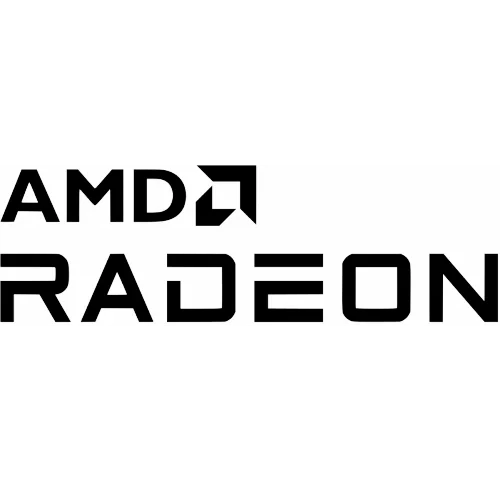Radeon HD 7000 Series Linux Driver Support

I've seen the question come up more and more via the emails, forums, and elsewhere: "What are AMD's open-source guys doing?" At a time when Intel is tackling OpenGL 3.0 within their open-source drivers and are working on other improvements like Glamor acceleration, improved power savings, and other features, there hasn't been too much new open-source AMD Radeon news to report in a number of weeks.
It's not that the open-source Radeon Linux driver is complete, since its performance for many generations of Radeon GPUs lag behind the proprietary Catalyst driver, there's still many missing features (proper power management, CrossFire, OverDrive, full AA, etc), and other shortcomings. Read The Most Comprehensive AMD Radeon Linux Graphics Comparison for more details on the current ATI/AMD Linux graphics situation.
So what is AMD's few open-source Linux graphics developers up to? Hardware enablement of the Radeon HD 7000 "Southern Islands" series. This is the next-generation of Radeon graphics processors that will be launching in the next few months.
In response to one of the Phoronix reader questions from earlier today, the official response from AMD's John Bridgman is that "Most of the devs are working on initial support for hardware whose programming info hasn't been released yet, so you won't see the activity in public repositories yet." i.e. that's what will be known as the Radeon HD 7000 series with the Southern Islands codename. John also says:
If you look back over the last few years you'll see a recurring pattern:
- why is everything happening so slowly ?
- why is everything happening so slowly ?
- I can't believe how fast things have progressed !!
- why is everything happening so slowly ?
- why is everything happening so slowly ?
- I can't believe how fast things have progressed !!
...
That's the turnaround time in doing work behind closed-doors first, then clearing AMD's legal review, publishing of the hardware enablement code and other features, and then repeating the process. Unlike Intel, AMD doesn't publicly work on their next-generation open-source driver support code. They push when it's ready and when the higher-ups tell them that it's okay.
AMD's John Bridgman, Tom Stellard, and Alex Deucher (in the background) at XDC2011 Chicago.
Intel meanwhile has had out "Ivy Bridge" graphics support code going back to April and a continual stream of Linux kernel, xf86-video-intel DDX, and Mesa changes since that point. Having the support public and out there prior to the hardware's debut (Ivy Bridge isn't coming until early 2012) does allow for some level of "out of the box" support in major Linux distributions by the time the hardware is shipping. The Sandy Bridge successor should see decent support in Ubuntu 12.04 LTS, RHEL6, and others by launch. AMD hasn't yet really managed this, but we hope it might be the case around the time of the Radeon HD 8000 series.
For the AMD Radeon HD 7000 series my hope and expectation is that they will have out some open-source support code around the time the hardware ships, which is rumored to happen either in December or early 2012. This will be when the code gets queued up in drm-next on the kernel side to then be pulled into the mainline tree for KMS and acceleration (perhaps the Linux 3.3 kernel but I wouldn't be surprised if we need to wait around until the Linux 3.4 kernel) and what on the Gallium3D user-space side will be Mesa 8.1 (or Mesa 8.0 should Intel's GL3 support not make Mesa 7.12 be released as version 8.0). Hopefully the 3D acceleration code will be ready in the first public push, rather than having to only have kernel mode-setting support and then waiting around for the acceleration support. Ideally the public documentation will also be ready too, but as of late there seems to be less emphasis in that area and more about getting out open-source code that works.
The AMD Radeon HD 7000 series will be 28nm-based GPUs and are expected to ship with support for x86 addressing in a unified CPU/GPU address space, integrate PowerTune support, RISC MIMD instructions replacing VLIW SIMD instructions for GPGPU computing, XDR2 video RAM, PCI Express 3.0 support, and various other interesting changes.
On the proprietary (Catalyst) Linux driver side (and for Microsoft Windows too), I hear that the fglrx 8.92 series is what should be suitable for the initial Southern Islands ASICs. That would be Catalyst 11.12, but surely the support will evolve over the first few months.
In terms of what else AMD's small open-source team is working on, back at XDC2011 it was shared that Tom Stellard has been investigating OpenCL and Christian had been working on some video related stuff for a while. Thankfully this team was not affected by the recent AMD cut-backs.
This article shouldn't come as a huge surprise if you follow Phoronix and Linux graphics developments closely or are an active member of the Phoronix Forums, but if you've been wondering what AMD open-source employees have been up to lately, it's mostly about new hardware support. If you were reading this article hoping to see Radeon HD 7000 benchmarks or the driver support pushed, sadly that is not the case. Though for those hoping this article contained something juicy: if you are not following my Twitter, there are some Linux benchmarks of unreleased Intel CPUs surfacing on OpenBenchmarking.org. That bit of digging will yield some soon-to-be-out new Sandy Bridge server CPUs and with a bit of luck and page clicks you may be able to find the first Ivy Bridge processing results under Red Hat Enterprise Linux.

